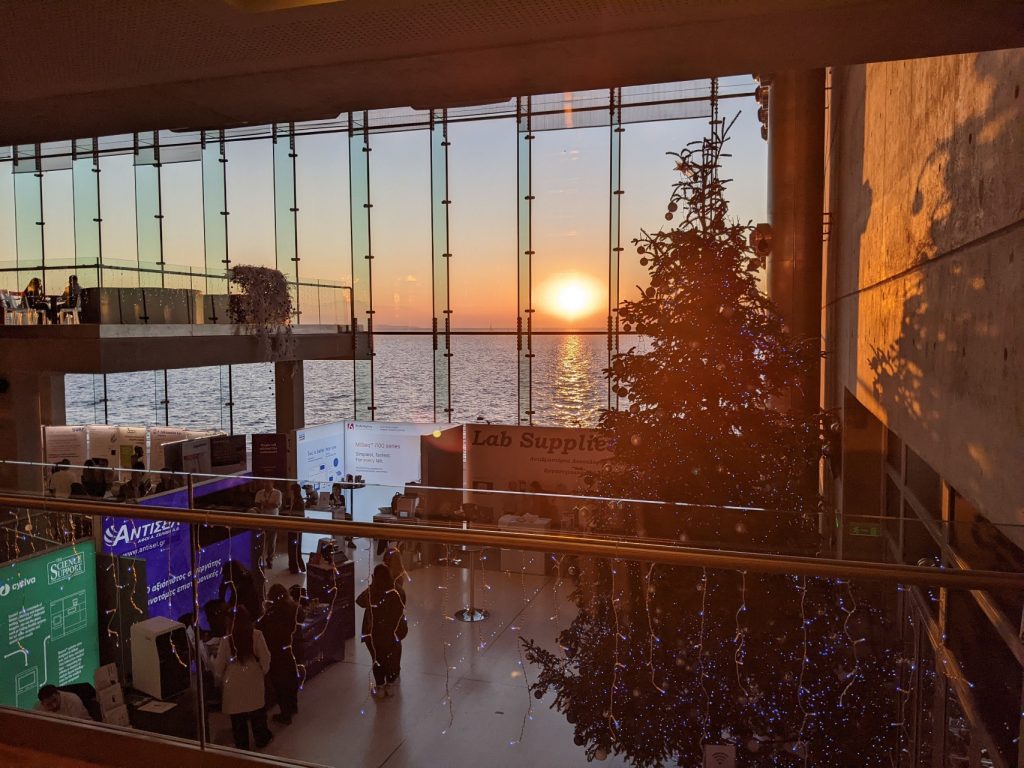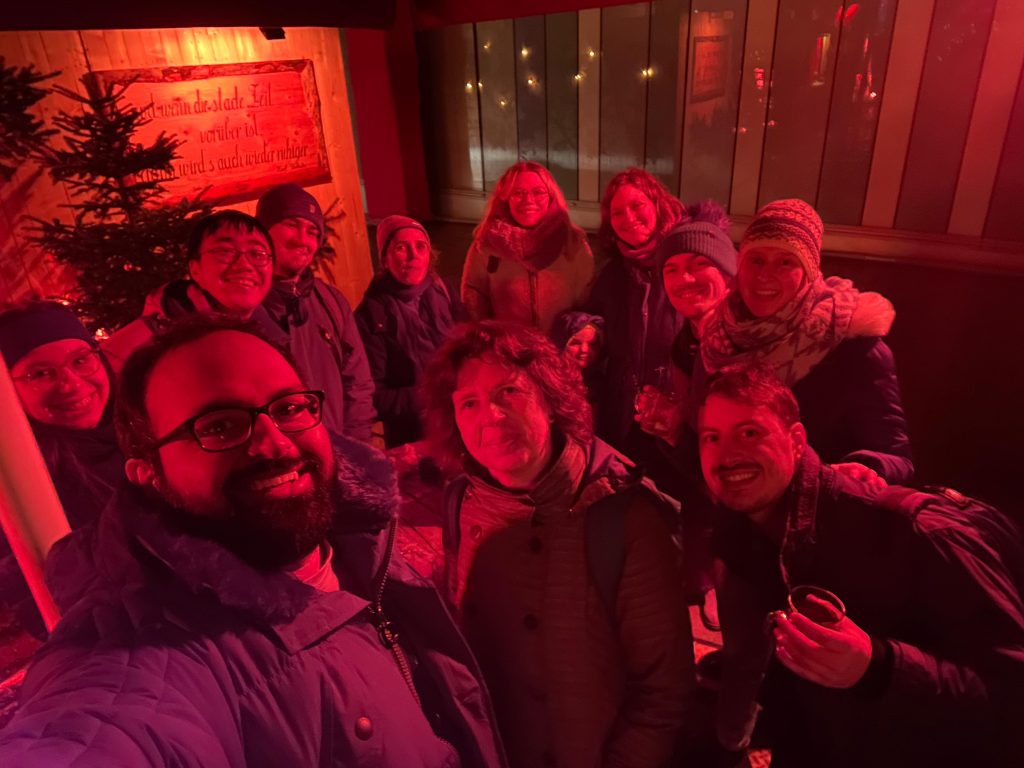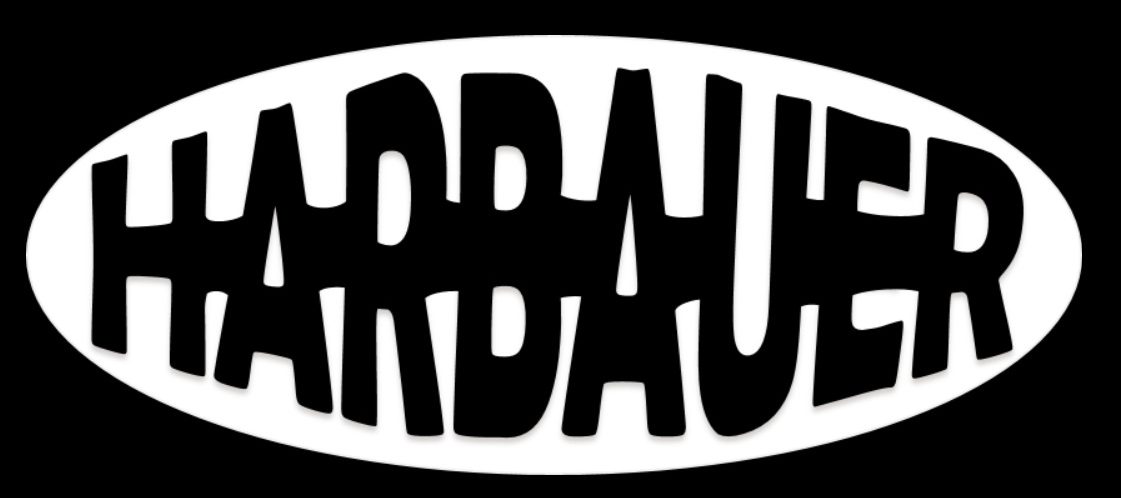Synergize Meeting in Raitenhaslach
Another great abbey this year, at the PhD and PostDoc organized retreat of our Excellence cluster SyNergy. What an event to speak in such a beautiful location! Thanks for selecting me as a speaker!

What a view! Image credit Astrid van Kimmenade Hiking day Schliersee
It’s risky to plan a hike on October 30th, but luckily the weather was not too cold…although we still had some light drizzle and not the bright sunshine that we had all the rest of that week. So unfortunately the planned alpine roller coaster trip down from the Schliersbergalm was cancelled as the brakes don’t work on wet tracks. But at least we still could use the trampoline and enjoy the amazing views!

Classic chaos of taking the train anywhere with Deutsche Bahn 🙁 
We all fit in the tiny hut on our hike! 
group picture at the Schliersee 
Jump! EMBO conference “Mitochondria in the nervous system”
It took two years of planning and then our dream became finally true! With my friend and colleagues, Tatjana Kleele, Julien Courchet and Elisa Motori, I organized and EMBO meeting on “Mitochondria in the nervous system”. Thanks to Tatjana, we held the meeting in Switzerland, in the beautiful town of Engelberg, surrounded by impressive mountains, an old abbey and amazing cheese. Together with the amazing science this was my favorite conference ever. To many happy returns!





Otto-Hahn Medal for Tabitha Hees
For her excellent thesis and impactful work, Tabitha was awarded the Otto-Hahn Medal of the Max-Planck Society, together with five other awardees in the biomedical section. I could not be more proud of her!

Tabitha and I before the awards ceremony. 
The awardees during their photo shoot. Happy PhD, Simone!
So proud of Simone for successfully defending her PhD! Thank you for all the hard work in the past years and for hanging in there despite all the picots your project took! Well deserved mag(m)a cum laude!

So happy with her hat! 
The Translatum is always a great place for group pictures 🙂 
Lemon curd PhD cupcakes made by me. Retreat in Seewiesen with the Kleele Lab
So much fun to host the Kleele lab at our beautiful Seewiesen Campus, for fun and science! In you we have found our kindred spirits that share our love for neuronal mitochondria…and were wolf games 🙂

Some bowling as a warm up… 
Kleele lab 
Harbauer lab 
Who is ready for playing were wolf? Another Happy hour, another fun theme!
This time is was “The office”. and organized together with the neighboring Mayer lab. My only problem: I never watched the show, so I don’t get all the jokes. I hope you still enjoy the fun images we badly photoshopped for the posters.

Worlds best boss(es) 
The organizers Happy Chinese new year!
A bit late, but we still celebrated Chinese new year at our local Chinese restaurant. With help from Ben and Claire a feast of exotic flavors and custom orders! Thanks!

Yummy! We also tried the rotating board in the middle to share, but we still need practice in sharing. My first keynote lecture
Extremely grateful to be invited to Thessaloniki in the midst of winter by George Mosialos to give a plenary lecture at the annual meeting of the Hellenic Society for Biochemistry and Molecular Biology. Not only was it a dream to be away from the cold in Germany, but also the selection of invited speakers (my talk was paired with Michael Hall!), the first class treatment and the gorgeous location were absolutely worth the trip. Only downside: some talks were in Greek, which is not my strongest language 🙂

Such a great location at the Thessaloniki Concert Hall 
This made my introduction into AMPK/mTOR signaling really easy 🙂 It’s Christmasmarket time
This time around we went to the Christmasmarket around the corner from Viktualienmarkt, where they have a record-winning-sized cauldron with Feuerzangenbowle (flaming fire tongs punch, basically mulled wine laced with rum and caramelized sugar). Very tasty and interesting lighting, but lacking in vegetarian food options. I had to leave early because I had a little companion with me who got cold…unfortunately, no Feuerzangenbowle for her to keep her warm 🙂

The light makes us look more drunk then we were…
